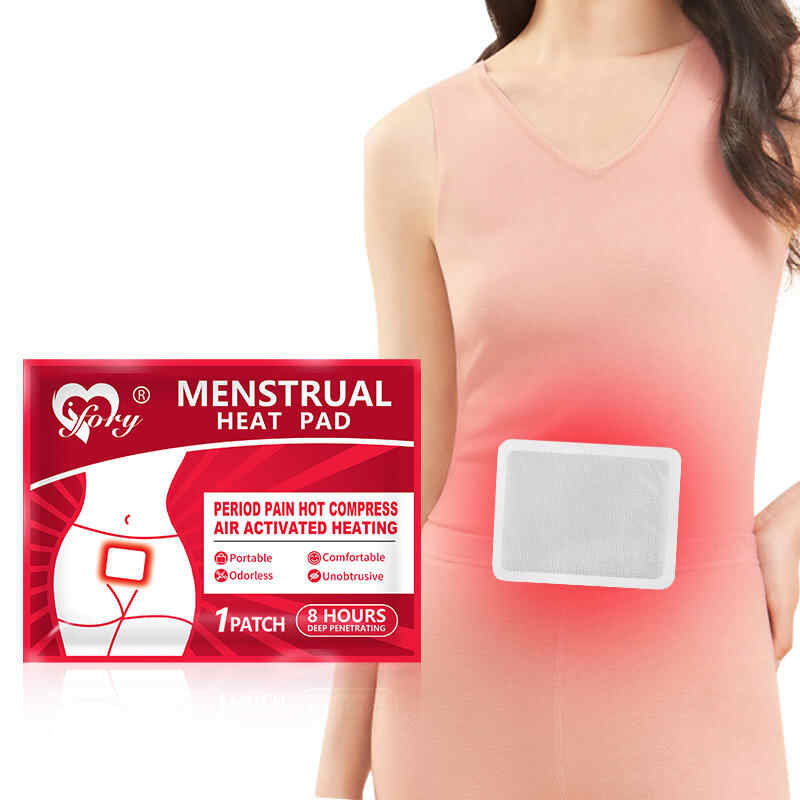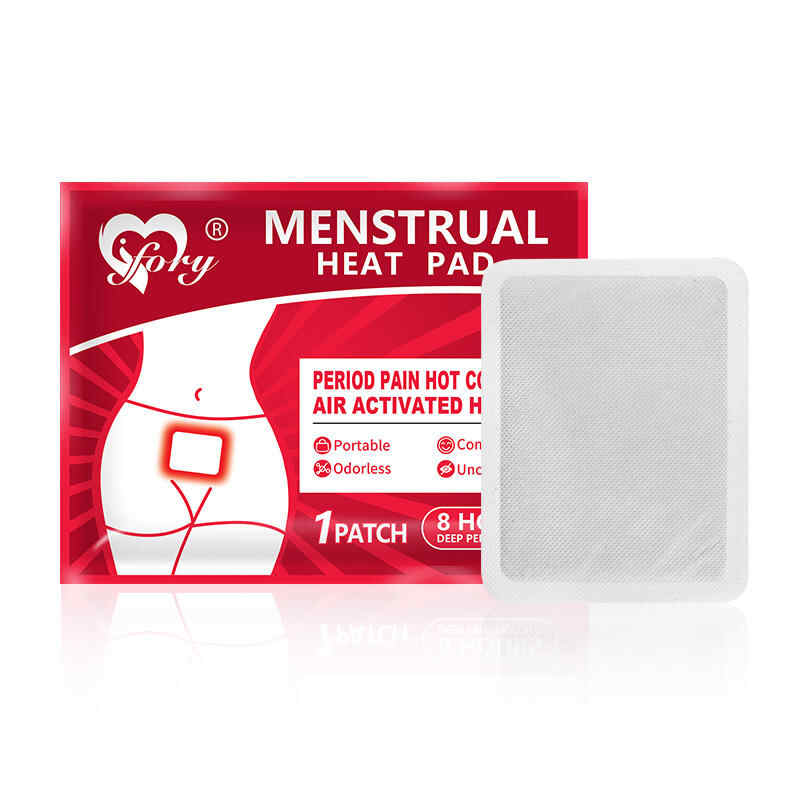How Does a Menstrual Pain Relief Patches Supplier Test Product Safety?
In the competitive global wellness market, safety is the foundation of trust. When consumers use Menstrual Pain Relief Patches to ease cramps and discomfort, they expect relief—not irritation or side effects. For brands, that trust begins with choosing a reliable and certified Menstrual Pain Relief Patches Supplier that prioritizes safety testing.
Testing product safety isn’t just a technical requirement—it’s a commitment to quality, regulatory compliance, and consumer well-being. Whether you are developing Custom Menstrual Pain Relief Patches with specific herbal ingredients or partnering with a Menstrual Pain Relief Patches OEM for private label production, understanding the safety testing process helps you evaluate your supplier’s credibility and protect your brand reputation.

1. Why Product Safety Testing Is Essential in Menstrual Pain Relief Patches Manufacturing
Every credible Menstrual Pain Relief Patches Manufacturer understands that testing is a cornerstone of product development. Unlike simple cosmetic items, menstrual patches directly contact the skin for extended periods, meaning poor-quality materials or untested formulations could lead to irritation, allergic reactions, or even systemic effects.
Safety testing ensures that:
Ingredients are non-toxic and safe for prolonged skin contact
Adhesives and fabrics do not cause irritation or rashes
Active ingredients (like menthol, lidocaine, or herbal extracts) are stable and effective
The product maintains its performance over time
The patch complies with regional regulatory requirements
For Private Label Menstrual Pain Relief Patches, passing safety tests not only ensures compliance but also gives your brand the authority to claim safety and efficacy confidently in marketing materials.
2. Step-by-Step: How a Menstrual Pain Relief Patches Supplier Tests Product Safety
Testing product safety involves several layers of scientific evaluation and regulatory documentation. Below is a breakdown of how a professional Menstrual Pain Relief Patches OEM ensures every patch is safe before reaching consumers.
2.1 Ingredient Safety Evaluation
Before production begins, the Menstrual Pain Relief Patches Manufacturer must assess all raw materials—adhesives, fabrics, and active ingredients—for safety and compatibility.
This includes:
Toxicological assessment of each ingredient
Review of regulatory compliance (FDA, EU REACH, or cosmetic safety standards)
Analysis of potential allergens or irritants
Stability testing to ensure ingredients remain safe throughout the product’s shelf life
For Custom Menstrual Pain Relief Patches that include herbal ingredients such as mugwort, ginger, or capsaicin, this step ensures that the natural actives are safe and do not produce unexpected reactions when applied to sensitive skin areas.
2.2 Patch Adhesive and Material Testing
Since patches adhere directly to the skin, the adhesive and backing materials must undergo strict safety testing.
Tests typically include:
Skin irritation tests (to ensure adhesives don’t cause redness or discomfort)
Sensitization tests (to check for allergic reactions)
Cytotoxicity tests (to confirm materials are not toxic to skin cells)
Transdermal permeability testing (to measure ingredient absorption and ensure controlled release)
A professional Menstrual Pain Relief Patches Supplier uses medical-grade adhesives and hypoallergenic materials to ensure comfort, especially since menstrual patches are often worn for several hours.
2.3 Microbiological Testing
Microbial contamination can compromise product safety, especially in patches containing herbal or organic ingredients.
Therefore, manufacturers conduct microbiological testing to detect harmful bacteria, yeast, or mold.
Key parameters include:
Total viable bacterial count
Fungal and yeast contamination levels
Absence of specific pathogens such as Staphylococcus aureus or Pseudomonas aeruginosa
A certified Menstrual Pain Relief Patches OEM maintains cleanroom conditions and follows GMP (Good Manufacturing Practice) protocols to eliminate contamination risks during production and packaging.
2.4 Stability and Shelf-Life Testing
Stability testing ensures that the patch maintains its safety and efficacy over its intended shelf life.
During this process, the Menstrual Pain Relief Patches Manufacturer exposes the product to different environmental conditions (temperature, humidity, and light) to assess:
Changes in ingredient concentration
Adhesive performance over time
Packaging integrity
pH and moisture stability
These results determine the patch’s expiration date and storage instructions. For Private Label Menstrual Pain Relief Patches, such data are critical to meeting global import and retail standards.
2.5 Dermatological and Clinical Testing
Perhaps the most important part of safety evaluation is human skin testing, which verifies that the product is safe for real-world use.
A responsible Menstrual Pain Relief Patches Supplier conducts:
Dermatological patch tests: Performed on volunteers to assess skin irritation potential.
Clinical safety studies: Observing users over several application cycles to detect allergic or adverse reactions.
Efficacy testing: Measuring the patch’s ability to relieve menstrual discomfort safely.
Products that pass these studies can be labeled as “dermatologically tested,” “clinically proven,” or “hypoallergenic,”—powerful claims that build brand trust and market appeal.
2.6 Heavy Metal and Chemical Residue Testing
For Custom Menstrual Pain Relief Patches, especially those containing herbal ingredients, residue testing ensures no harmful contaminants remain after production.
Testing covers:
Heavy metals (lead, mercury, arsenic, cadmium)
Pesticide residues (if plant-based extracts are used)
Residual solvents or volatile compounds
These tests are crucial for compliance with RoHS, REACH, and FDA standards, depending on the product’s classification and destination market.
2.7 Allergen and Sensitivity Testing
Some users have extremely sensitive skin or allergies to common compounds like latex or synthetic fragrances.
To protect such users, the Menstrual Pain Relief Patches OEM performs hypoallergenic testing to verify that the patches:
Do not contain allergenic substances
Are suitable for sensitive or acne-prone skin
Maintain mild pH levels close to natural skin conditions
This testing ensures broad market compatibility, particularly important for Private Label Menstrual Pain Relief Patches targeting women with sensitive skin or natural product preferences.
2.8 Safety Documentation and Certification
Once testing is complete, the Menstrual Pain Relief Patches Manufacturer compiles comprehensive documentation, often referred to as a Product Safety Dossier, which includes:
Toxicological profiles of ingredients
Laboratory test results
Stability and microbiological reports
Clinical and dermatological test outcomes
MSDS (Material Safety Data Sheets)
This documentation supports certification applications such as ISO 13485, GMP, FDA registration, or CE marking, which are essential for selling the product in international markets.
3. The Role of Third-Party Testing and Regulatory Compliance
While internal testing ensures quality control, credible Menstrual Pain Relief Patches Suppliers often send samples to independent third-party laboratories for unbiased verification.
Third-party testing provides impartial validation of:
Ingredient safety and concentration
Product performance claims
Compliance with regional safety standards
For example:
FDA (U.S.): Requires safety and labeling verification for OTC drug-based patches.
CE (Europe): Demands product safety and biocompatibility testing under EU medical device regulations.
ISO 22716 (Cosmetic GMP): Mandates documented safety procedures for cosmetic-type patches.
Partnering with a certified Menstrual Pain Relief Patches OEM ensures that your brand’s products meet these global benchmarks seamlessly.
4. Continuous Quality Control in Production
Safety testing doesn’t end after the first batch. Leading Menstrual Pain Relief Patches Manufacturers implement ongoing quality control throughout production to ensure consistent safety standards.
This includes:
Incoming raw material inspections
Batch sampling and testing
Packaging and seal integrity checks
Environmental monitoring of production facilities
Post-market surveillance to collect user feedback and address potential issues
Such continuous testing ensures that every patch—whether part of a large private label order or a small custom batch—meets the same high safety standards.
5. Why Safety Testing Builds Brand Credibility
In an era of informed consumers and global competition, safety-tested products stand out. A Private Label Menstrual Pain Relief Patches brand backed by certified safety testing can confidently make claims like “clinically tested,” “safe for sensitive skin,” or “dermatologist-approved.”
These certifications and documented results:
Increase customer trust and repeat purchases
Enable smoother regulatory approval and import clearance
Strengthen B2B partnerships and retail acceptance
Protect brands from costly recalls or legal challenges
Ultimately, working with a safety-focused Menstrual Pain Relief Patches OEM allows your business to focus on growth, knowing that your product integrity is scientifically validated.
6. How to Choose a Safety-Focused Menstrual Pain Relief Patches Supplier
When evaluating potential partners, ask these critical questions:
What specific safety tests do you conduct?
Are tests done in-house or through third-party labs?
Can you provide complete safety and stability reports?
Do you hold certifications like ISO 13485, GMP, or CE?
How often do you conduct quality audits?
A transparent and certified Menstrual Pain Relief Patches Manufacturer will readily share documentation and invite you to inspect their safety protocols.
Conclusion
Product safety is not negotiable—it’s the core of consumer trust and brand success. A reliable Menstrual Pain Relief Patches Supplier follows a rigorous, multi-step safety testing process that includes ingredient analysis, microbiological evaluation, dermatological testing, and third-party verification.
For brands looking to launch Custom Menstrual Pain Relief Patches or expand their Private Label Menstrual Pain Relief Patches line globally, choosing a manufacturer with proven safety testing capabilities ensures not just compliance, but excellence.
By investing in safety, you protect your customers, strengthen your brand reputation, and create products that truly deliver comfort and confidence.
Related Questions and Answers
Q1: Why is product safety testing important for Menstrual Pain Relief Patches?
A1: It ensures that the patches are safe for skin contact, free from harmful chemicals, and compliant with international standards.
Q2: What tests are most important for patch safety?
A2: Key tests include skin irritation, sensitization, microbiological, stability, and dermatological testing.
Q3: How do Menstrual Pain Relief Patches Manufacturers ensure consistent safety?
A3: Through ongoing quality control, batch testing, and adherence to GMP and ISO 13485 standards.
Q4: Are herbal-based Custom Menstrual Pain Relief Patches tested differently?
A4: Yes, they undergo additional tests for heavy metals, pesticide residues, and allergenicity due to their natural ingredients.
Q5: Can Private Label Menstrual Pain Relief Patches claim “clinically tested”?
A5: Only if the manufacturer provides verified dermatological or clinical study reports supporting such claims.
Q6: What certifications indicate a supplier prioritizes product safety?
A6: ISO 13485, GMP, ISO 22716, CE, and FDA registration are key indicators of a safety-driven Menstrual Pain Relief Patches OEM.






